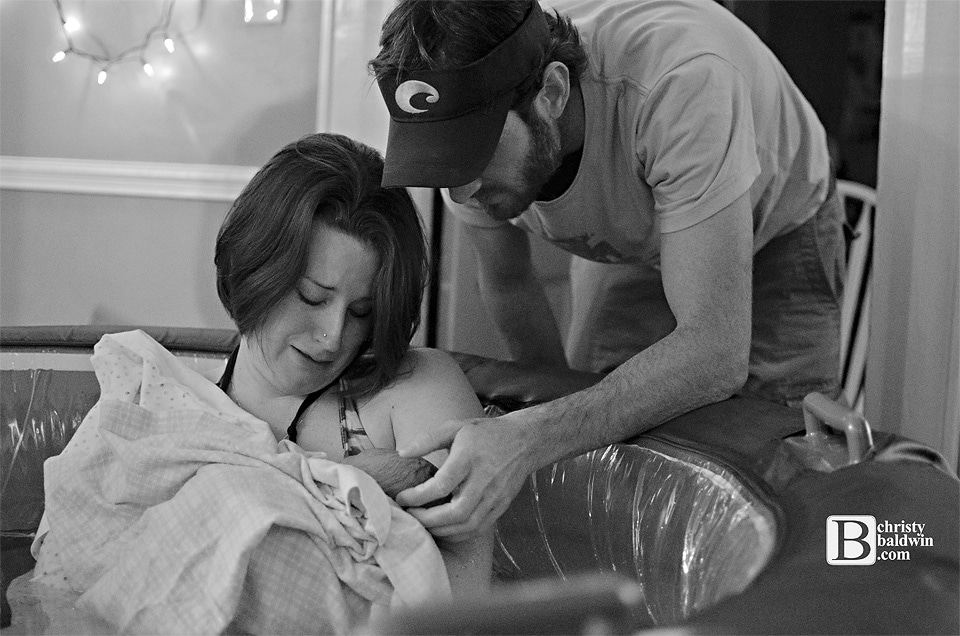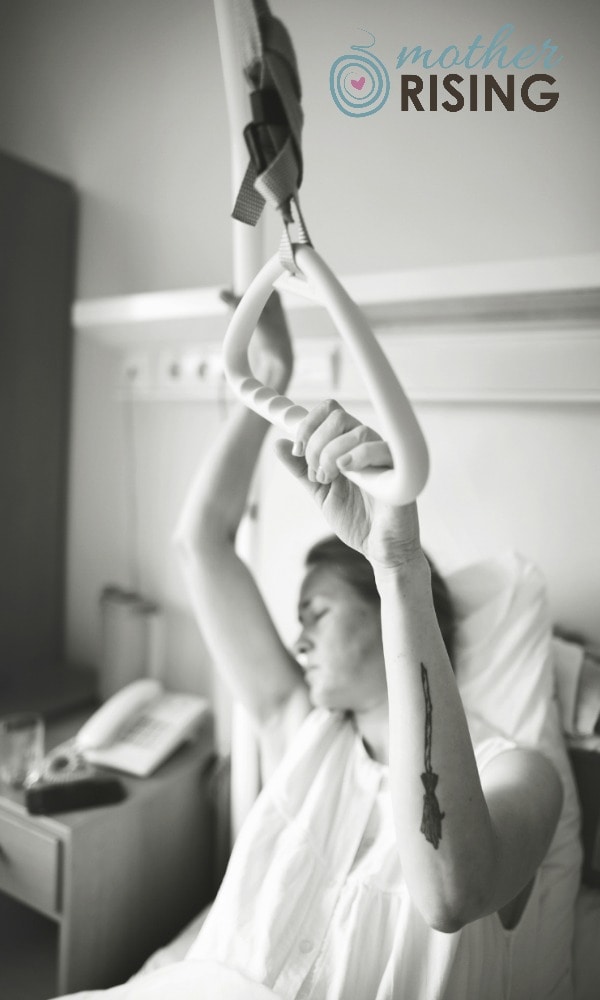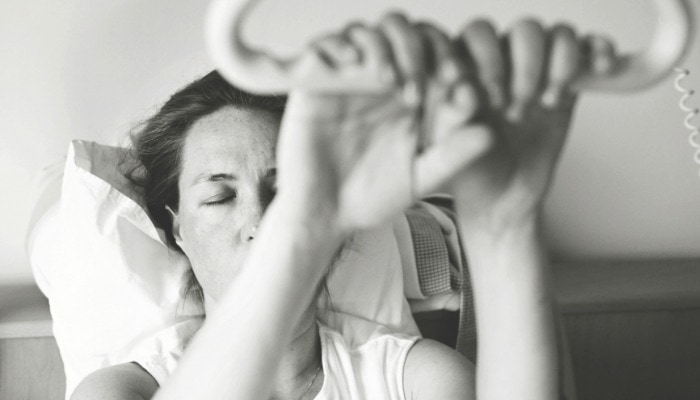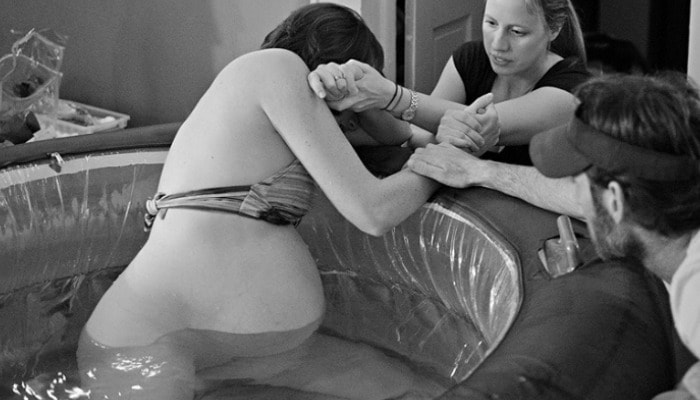It is 100% possible to get through transition without an epidural! This article is FULL of wonderful information about how to do just that. Let’s go!
What is Transition?
Birth becomes most challenging right before pushing, during the transition phase of labor. Transition is typically the shortest portion of labor, but also the most dreaded and feared. Contractions are long, strong, and close together.
This post is third in the series “The Stages of Labor: How to and Helpful Tips”. The first stage of labor has three parts:
- Part 1: Early Labor
- Part 2: Active Labor
- Part 3: Transition
Today we continue our journey through the first stage of labor. In previous posts, we discussed early labor and active labor, and in this post we’ll learn all about the transition phase of labor, especially how to get through it without epidural.

Transition Without an Epidural – You Can Do It!
Like I said above, the transition phase of labor is the shortest but the most intense portion of labor. Transition got its name because it is the part of labor where women transition from stage 1 to stage 2. Stage 2 is pushing. Transition happens right before you start pushing.
Symptoms of the Transition Phase of Labor
If you are experiencing the following symptoms, you may be in transition! Good job, you’re getting closer to meeting your baby!
- Very long contractions lasting around 90 seconds
- In comparison, the average active labor contraction is around 60 seconds and early labor is only at 30 seconds
- Contractions are close together, around 2-3 minutes apart
- Instead of completely going away contractions sometimes “double peak”
- Women feel like they’re not getting a break. You may hear her say, “I’m not getting a break.”
- Hot and sweaty
- Cold and shaky
- Nausea and vomiting
- Crying
- Unable to find a comfortable position
- Contractions increase when changing positions
- Afraid to change positions
- Looking for a way out
- Asking for help
- Water breaking
- Discouragement and/or “giving up”
- Irrational thoughts and behavior (ex: I decided I was going to break my water myself after a failed attempt by my midwife)
- Asking for pain relief/medication
How to Give Birth Without Epidural
Having an unmedicated childbirth is totally possible. There are many ways to decrease the sensation of pain and cope well during a natural childbirth. You can do it!
However, many women receive epidurals from their health care provider during the transition phase of labor because they can’t cope and/or their birth team is unable to help them cope. The following are some amazing ideas to add to a birth plan that will get you through this intense portion of birth without epidural.
Remember, you can do it!

1. Change Positions
One of the best pieces of advice I can give you for coping through the transition phase of labor is to change positions. And change often.
Paradoxically, this is also probably the toughest piece of advice to follow during transition. The thing is, during labor when you get in a position that is working for you, or even if its not, it can be hard to change positions.
When I was in labor and I moved, it sometimes caused additional contractions. I wanted my contractions to go away, or to be less intense, so therefore I thought that if I just remained still things would get better.
However, in order to end the contractions, labor ultimately needs to crank up, get more intense so that you can push your baby out. At some point, you have to decide to accept labor, accept that things aren’t going to go away, and bravely embrace the sensations of birth, because those are what will bring your baby and bring the end.
Thoughts From My Birth
Here’s an excerpt of my thoughts during my second birth, a homebirth.
Oh. My. Gosh. I was in so much pain. My contractions weren’t stopping. They would peak and then peak again. I cried out for somebody to help me get up and save me because I was in so much distress. After that contraction was over I did a little internal self-talk.
“Lindsey, you need to be brave. You need to get up and move.”
And so I got up and moved. I was brave. My baby was born not long after that.

Be encouraged! By being brave and changing positions you might find a more comfortable position and it also might speed up your labor – which is what we want, right?
TIP: The first contraction after a position change can be hard to cope through. If you change positions and it feels AWFUL, try it for three more contractions. If after three contractions it still isn’t working, try something new. Sometimes after three contractions you may find that it is actually working for you. Yay!
Here are some positions to try during the transition phase of labor.
- Sitting on the bed
- Standing and leaning into a birth partner, bed, table or wall
- Sitting on a ball
- Leaning on a ball (standing or sitting)
- Peanut ball
- Toilet
- Shower (The shower is the PERFECT place to be in transition. It’s so helpful for labor pain!)
- Tub
- Squatting
Head on over here to read more about positions to try during labor for a faster, more comfortable birth.

2. Encouragement is Key
A common signpost of being in transition is feeling like you can’t do it. You might say…
- “I can’t do it.”
- “If I have to do this for another ______, there’s no way I can do this.” (Remember, labor math doesn’t exist!)
- “Someone help me!”
- “I need an epidural. No really, someone get me an epidural.”
You know what? When my doula clients start saying these things I know 1) we are getting close to pushing and 2) I need to increase my support and encouragement.
Encouragement during the transition phase of labor is VITAL. If a woman does not have a team of support to rely on, she will often turn to medication.
What to Say
This does not have to be! Here are some suggestions for encouragement during that last bit of intense labor.
- “You get to meet your baby soon.”
- “Feeling this way means you’re progressing.”
- “You’re getting closer to your baby.”
- Use Penny Simkin’s “Take Charge Routine“
- “You are doing it! Right now!”
- Reminders that what she’s feeling is normal.
- Read Mother Rising birth affirmations or bible verses for birth
Check out this article for more ideas of what to say and what not to say to a woman in labor!
During transition I often felt like something wasn’t working correctly. It seemed like things were hurting far worse than they should and that I wasn’t progressing quickly enough. The cost was far outweighing the perceived benefit.
I found it helpful for people to remind me that things were progressing normally, and in fact they weren’t even going slowly. When you’re in labor it is hard to have an accurate sense of time. Reminders and encouragement are so helpful.

3. Maintain Focus
During active labor a mom might be more tolerant of external distractions like bright lights, talking, the tv, and extra guests. However, during the transition things get more intense, which requires a whole other level of focus.
Unfortunately, instead of enforcing privacy and creating a birth space more conducive to focus, many women request epidurals to accommodate their surroundings instead of requesting the surroundings to accommodate her.
Mamas! This is YOUR DAY! Of all your days here on earth, this is your day to tell others how you want things to go. Better yet, have your doula or “birth bouncer” (baby’s father, nurse, etc.) enforce privacy for you.
- Ask observers or other unhelpful people to leave.
- Request silence.
- Dim the lights.
- Enforce privacy.
- Turn off the tv.
It is easier to cope through transition and give birth within a focused birth space.

4. Stay Hydrated
Another important part of coping through the transition phase of labor is to stay hydrated. A simple method of staying hydrated is by offering mom sips of ice water between contractions and with a bendy straw.
To help keep mom energized, diluted juices and electrolyte drinks can also be used. Chewing on crushed ice is amazing between contractions. Of course, I love using electrolyte cubes for labor!
Staying hydrated during the transition phase of labor is important especially if mom is vomiting. Dehydration is the enemy!
By staying hydrated you will help keep yourself and baby healthy, give yourself energy and shorten your labor time. STAY HYDRATED!
5. Stop Complaining
It is really easy to complain during labor, especially transition. However, I’ve repeatedly found relief when I chose to switch gears and stop complaining.
Frankly, nothing was helping anymore and once I decided there was nothing to be done, I stopped whining about it. And instead of complaining and whining, I focused my energy on to other things.
With my second birth I decided to get up and move. With my third birth I decided to start squatting.
By changing my attitude I eased my suffering, became more productive in labor, and helped myself to progress. Who knew, right?

6. Try Something New
During my third birth (pitocin augmentation) I vocalized a lot. It was very helpful!
However, I got to a point where I wanted to crawl out of my skin – nothing was working anymore. My doula’s touch irritated me, my vocalizing was not helping things, and I was at a loss.
Here’s another excerpt, this time from my third birth where I tried something new.
The vocalizing I was doing was NOT working anymore. Nothing really, was working anymore. I became “that lady” in labor. I’m cold… so they put a blanket on me. I’m hot get it off! Push on my back! No stop! No position felt any better. It was awful. It felt like fire. Fire on my belly and fire on my back. Hot, burning fire.
At one point I decided that I needed a different approach and that I was not coping well. So, I decided to sit on the hospital bed and not vocalize at all. Now, to the observer it probably looked like I was feeling pretty good but it was still terrible. It didn’t get better, the contractions were still hell. However, after doing a few contractions like this I felt a little bit less out of control. My contractions spaced out the tiniest bit (which is probably when Tanashia turned the pit up haha) and I got to doze between contractions. This was my big aha moment during my Pitocin experience. I had the courage to change things up when nothing was working anymore.
Trying something new was scary. However, it actually turned out to be helpful. If you don’t know what to do to cope during transition, try something completely new, and possibly a bit scary. It worked for me!

7. Let It Go
My final piece of advice for coping through the transition phase of labor is to just let go. Channel your inner Elsa and just LET IT GO.
As a doula observing births and as a mom experiencing labor, I have found that once we decide to stop fighting labor, but embrace and work with it, our bodies relax and things progress.
Let it happen. Allow your body to open. Let your baby come down.
Giving Birth Without Epidural – YOU GOT THIS!
Ladies, YOU CAN DO THIS!
Don’t let anybody tell you that transition is too difficult to birth without epidural. (Sure, epidurals can be used wisely and compassionately. Epidurals absolutely have their place… But that’s another blog post.)
You can absolutely, positively have a natural birth! You can make it through transition without an epidural. Birth without epidural is 100% possible! By using the tips, tricks and strategies above you will be well on your way to rocking an unmedicated birth.
Rock on, mamas!

Read the Comments!
For those that had unmedicated births, please leave a comment and let us know how you coped through birth without epidural. If you’re pregnant, read the comments. Ladies, these comments are GOLD. Read all about how to have a natural childbirth. You can do it!

Patrice
Thursday 24th of October 2024
I was induced but I wanted an unmediated birth. With the induction the contractions were very powerful. My husband helped by providing counter pressure whenever a contraction came. My mom, who has trained as a doula, sponged my back with warm water during the transition. I focused on trying to relax and reminding myself that the pain was leading to my baby. Fortunately this induction took less than four hours. I did it all without any pain medications. Just warm water, counter pressure and the right mindset. It helped that the nurses and my doctor totally believed I could do it without the epidural.
Daron
Tuesday 12th of July 2022
I know this article was written several years ago but I was online looking for transition tips! I am pregnant with my 3rd baby! My first was induced and I wasn’t prepared for the pinto in contractions so I ended up with an epidural. With my second I planned a natural hospital birth. I vowed to not get the epidural and spent the entire pregnancy practicing all kinds of coping skills. I practiced deep breathing, meditation, positive self talk and really pumping myself for labor. Well it worked! I was in active labor for less than 3 hours. Right before transition hit I was swimming in the pool at my moms condo with my older son. Suddenly I could feel myself closing up because there were tons of elderly tourists in the pool (noon in Hawaii! Haha) I wanted desperately to squat. I took myself back to her condo and ran a hot bath. I could barely squeeze half my body in the bath. Side lying. This is actually when I realized I was clearly in labor. I said to myself “buckle up girl, you’ve got hours of this” I also kept thinking, “be brave and change positions.” I would switch sides periodically. I was in the tub for maybe 10-15 min. I suddenly bolted from the tub thinking I had to pee really bad. I’d read somewhere to be sure to keep your bladder empty. I sat shaking on the toilet for a minute or two. Holy cow I thought! Suddenly I felt this insane urge to push! No way! I was terrified that I would wreck my cervix. I seriously thought I was only like 5cm. I waddled to the carpet outside the bathroom and pushed my little girl out in 2 pushes! No one was there. It was just the two of us. I really think that deep calm breathing and consciously being relaxed helped keep my labor from drowning me in pain. It became intense but it was never painful.
Lindsey VanAlstyne
Thursday 4th of August 2022
You were so brave! :)
Ce
Friday 18th of June 2021
I’m currently pregnant with baby number 6, all 5 of my children I’ve had natural births with. I’ve found for myself I find a a small focal point relax to the best of my ability breath and imagine something peaceful for me I love to imagine the colorful bright colors swirling around like in Fantasia. Others might enjoy a beach with crashing waves or a waterfall. I have done this with and without a support person even my nurse and Ob were talking to each other about their recent vacations and left me on my own, but I still made it through without being medicated.
Ilse
Sunday 4th of April 2021
I would like te say, You have a good way of explaining what to do if you want a natural birth. I live in the Netherland and natural births are very commen. With my second birth i did a lot of moving around. As the midwife would say, i was doing a labour dance. In the Netherland you have a midwife helping you with your birth if your birth is not medical. In the shouwer i did some yoga poses. It only took 4 hours of labour and three pusches to get my baby boy out.
Lindsey VanAlstyne
Sunday 18th of April 2021
Thank you! :)
Sarah
Wednesday 17th of February 2021
I was linking this entry to my birth story and realized that I stead of just sharing with my friends, I should tell you that this post has gotten me through three deliveries now--one hospital, one birth center, and one homebirth. It spoke to me like nothing else I read and got me through each time. My entire contraction-mantra is based on this post! I share it with pregnant friends, too. Thank you so much for writing and posting it! It helped me understand labor and birth for the first time and get through two fully unmedicated births, and my first birth, which ended up medicated just at the end, but was many, many hours of labor before that. I don't know what I would have done without it.
Lindsey VanAlstyne
Monday 8th of March 2021
Wow, thank you so much for writing this comment! I really appreciate knowing that it was so helpful for you - three times! This post in particular has been a way for me to be a doula without actually being there. I'm so glad you found it helpful and that you share it with your friends. Awesome!